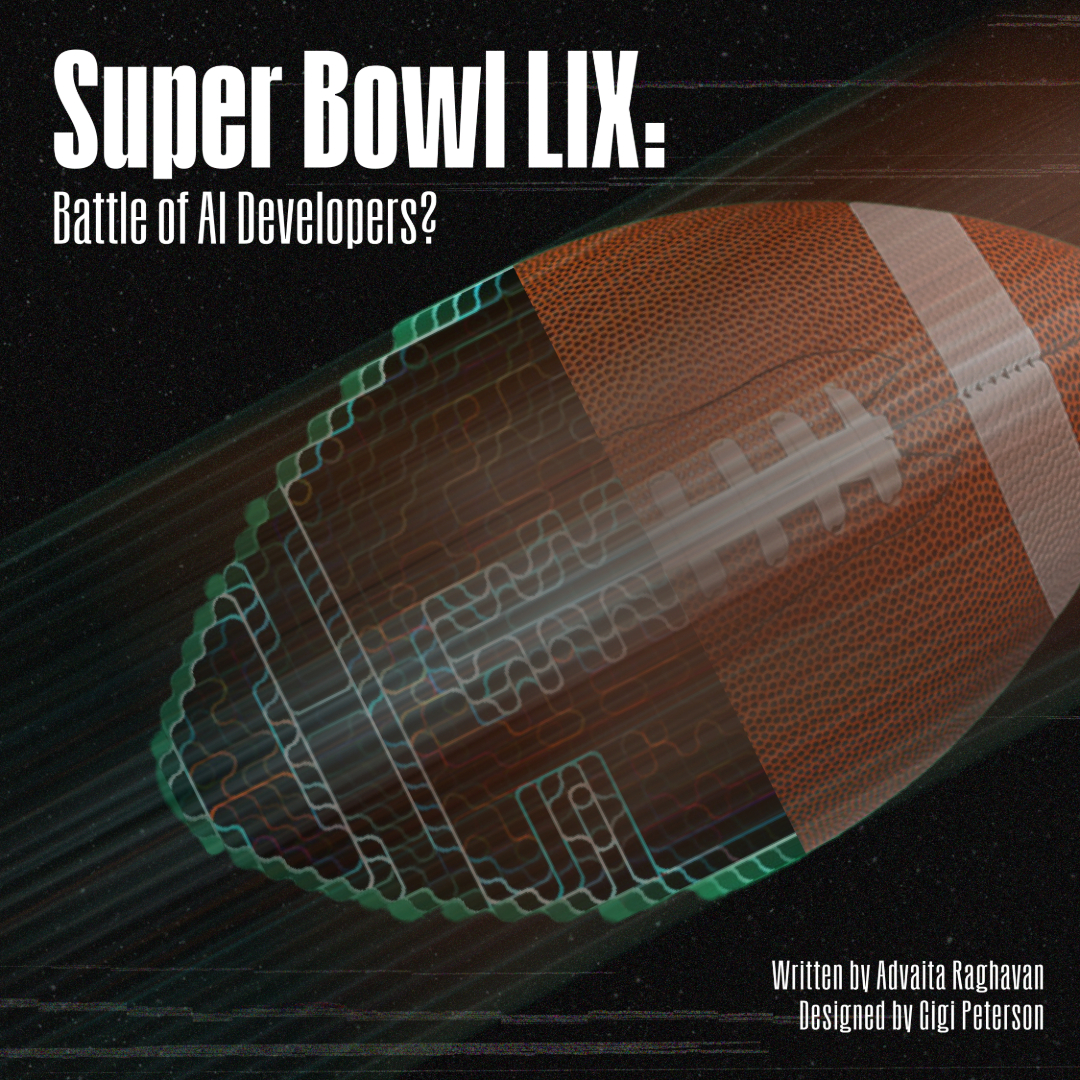
Every year, the top NFL teams go head-to-head in arguably the biggest game of football in the United States: the Super Bowl. Being the most watched televised event in the country, it’s no surprise that companies and brands fight to win a spot in the game’s ad breaks, making the commercials just as anticipated as the game itself. As proof of the intense competition, this year, a 30-second ad sold for $8 million, CBS News reports, which is an exponential increase from the $37,000 which they sold for in the first edition of the event. In line with contemporary trends, it’s only natural for AI to try to steal the limelight on a stage this big.
This year, the Super Bowl showed ads from four separate AI developers, earning the event the alias “AI Super Bowl.” With major names in the industry, like OpenAI, Google and Meta, all advertising novel products, one would think that their AI models would be at the forefront of their marketing strategies. Interestingly though, it seemed to be the opposite, with most companies choosing to minimise the mention of AI in their ads as much as possible.
OpenAI advertised their renowned generative model ChatGPT. The advertisement took viewers on a trip through history, from the discovery of fire to the moon landing and finally to AI. The animation effectively places AI on par with humanity’s greatest achievements. The futuristic, abstract art style, achieved through the use of pointillism, suggests that AI was used in its creation. However, apart from the initial prototyping and designs, which used AI, all of the animation was done by human artists, according to OpenAI’s CMO Katie Rouch.
In an interview with The Verge, Rouch explained that this was an intentional choice, with the goal of making the ad more accessible to the nearly 130 million viewers of the game, most of whom would not know what a large language model is. The purpose of their ad was to present AI as a “celebration of human creativity,” and OpenAI was not the only one who saw the appeal of this approach.
Learning from their gouda blunder from earlier this year, which perfectly defended people’s mistrust in generative AI, Google pulled back on their use of AI this time around. Titled “Dream Job,” Google’s ad featuring the Google Pixel 9 equipped with Gemini, a fully functional AI assistant, shows audiences “a whole new way to talk with your phone.” The video follows a man who uses Gemini to practice for a job interview. The conversation leads to him reflecting on his biggest job: being a father. Like the OpenAI commercial, Google avoids any mention of buzzwords like AI, data or algorithms. Instead, they appear to be making efforts to humanise their model with a voice programmed to sound natural. While it is clear that their goal is to make AI accessible to the millions of people who are either unaware of it or treat it as a ticking time bomb, the advertisement seems to fall slightly short. Gemini’s humanized voice and the semblance of a deeper connection created between the man and AI is more creepy than it is assuring.
Salesforce, another major AI developer, chose a more traditional route to advertise their AI app AgentForce. Featuring a panicked Matthew McConaughey running frantically through Heathrow airport to reach his gate, Salesforce more directly shows how they believe their AI model can save the day, by quite literally presenting the star actor’s predicament as a direct result of not using their product. The hyperbolic nature of the ad, while humorous, seems to portray humans as incapable of managing simple tasks without the assistance of AI. In making their AI model the hero of their ad, they effectively undermine human capability.
All of these companies accounted for one major consideration when marketing AI: a need for accessibility. The commercials all point to the idea that the best way to make it accessible is, interestingly, not to explain it but to conceal its true workings and shift the focus onto the human user. But what does this say about our understanding of AI and how we are using it? These ads highlight how we need AI to be humanised so that it transforms from something unknown and threatening, to something the common man can make sense of. As the number of commercials about AI increases, this approach might transform as American consumers become more familiar with it. Maybe in a few years we’ll see a shift from commercials that are just about AI to commercials created entirely by AI, and if Matthew McConaughey sounds a bit robotic in his next ad, you’ll know why.